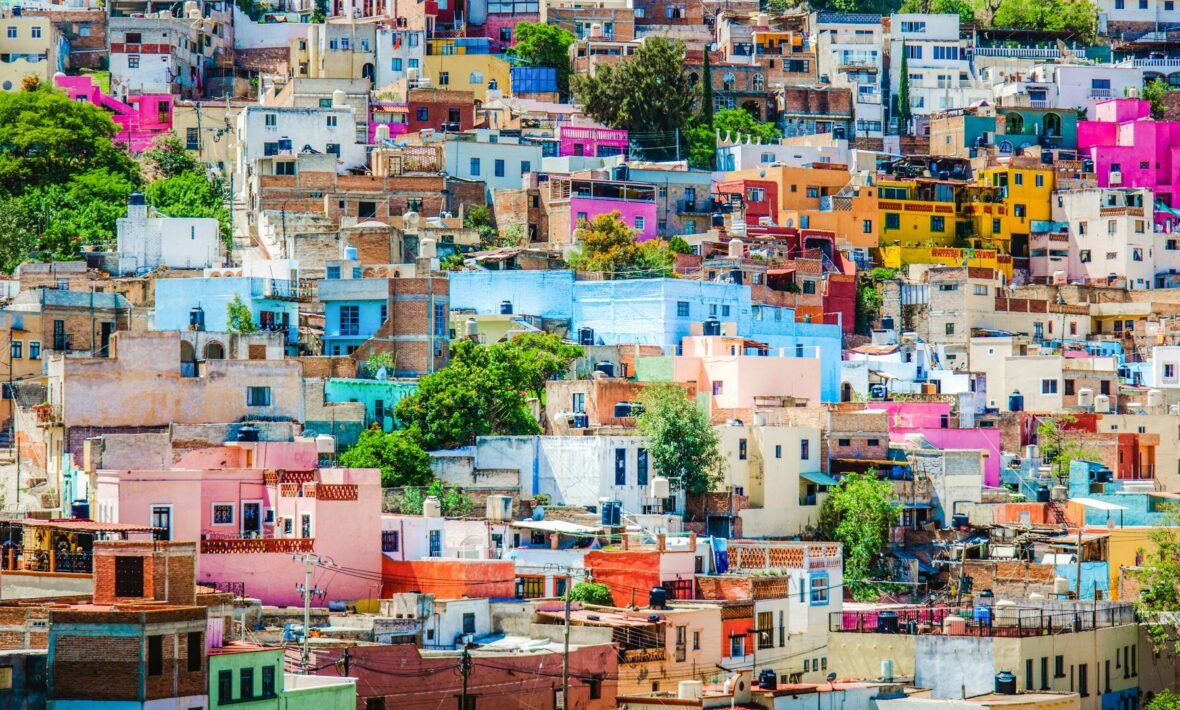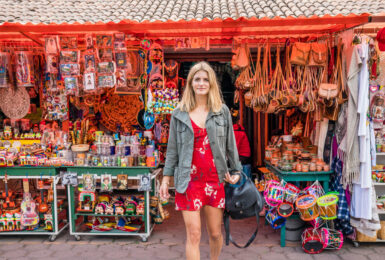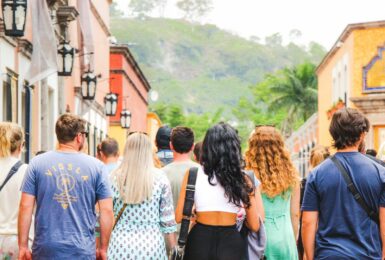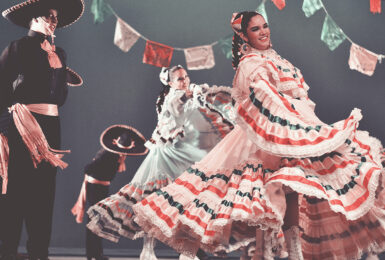
As a Black history educator, I love teaching Black history from places where people least expect it. Today we’re going to be looking at the rich and fascinating history of the Afro-Mexican community! From slave resistance leaders to Hollywood celebrities, let’s take a look at five incredible Black history facts from Mexico that will blow your mind!
1. Yes, there are Black Mexicans!
Sadly, even within Mexico, many people are not aware that there is an Afro-Mexican community. In fact, it was only in 2015 that participants of the intercensal survey were allowed to formally identify as Afro-Mexican for the first time. Later, in 2020, this census showed that 2.5 million people self-identified as Afro-Mexican and/or of Mexican descent – that’s about 2% of the population.
The region with the highest concentration of Afro-Mexicans is Costa Chica on the southern Pacific coast of Mexico, which includes the states of Oaxaca and Guerrero. Cuajinicuilapa (say that three times, fast) is a historically Black town in Guerrero and is also home to Mexico’s first Afro-Mexican museum! The second-largest Black population is in the state of Veracruz on the Gulf coast. This is where you will find the municipality of Yanga, a region of great historical importance to Mexico’s Black community which we will learn more about later!
Although the 2020 Mexican national census was a landmark moment in recognising the Afro-Mexican population, they remain largely invisible and under-represented in wider Mexican society. Afro-Mexican communities are some of the poorest in the country, often with limited access to education, healthcare, employment and other fundamental resources.
That said, grassroots organisations have been pushing for recognition and progress. In 2016, governmental anti-discrimination body CONAPRED launched the campaign “#SOYAFRO (I am Afro), designed to raise awareness of the Afro-Mexican community. Ahead of the 2020 census, a campaign was launched called AfroCensoMX to encourage Afro-Mexicans to participate.
2. Gaspar Yanga, the slave resistance leader
You may be wondering: ‘how did Africans first arrive in Mexico?’ The earliest significant influx of African migration to Mexico was a result of the Transatlantic slave trade. During the Transatlantic slave trade, which spanned broadly from the 16th to the 19th century, over 12 million Africans were enslaved by various European trading nations and brought to the Americas. During the Spanish Colonial period, the Spanish trafficked an estimated 200,000 Africans to ‘New Spain’ as it was then called, largely to work in agriculture, silver mines and sugar plantations.
As was a phenomenon across the Americas, many enslaved Africans in Mexico escaped captivity and formed their own self-governing settlements known as ‘palenques’ or ‘cimarrones’ (‘maroons’ in English). The most famous ‘palenque’ in Mexico was established in Veracruz in 1570 by Gaspar Yanga. If the name sounds familiar, it’s because this slave resistance leader inspired the title of a 2020 song by D Smoke and Snoop Dogg!
Gaspar Yanga was a formerly enslaved man who was born in Gabon in 1545. He was captured and sold into slavery in Veracruz, Mexico, where he worked on a sugar plantation. Around 1570, Yanga led a group of enslaved Africans to freedom in the highlands of Veracruz, where they formed a free settlement. The settlement existed for almost forty years, before it was attacked by Spanish authorities in 1609. Although the Spanish were larger in number and with superior weaponry, Gaspar and his troops successfully defended the settlement for many years.
Eventually, in 1618, Yanga reached an agreement with the Spanish colonial authorities whereby the settlement would be allowed to self-govern if they did not accept any more runaway slaves. The Spanish accepted the terms of the treaty and Yanga’s community was able to live freely. Their settlement was initially called San Lorenzo de los Negros de Cerralvo, and was later renamed to ‘Yanga’ in honour of its founder. In 1871 Gaspar Yanga was declared a Mexican national hero!
3. Afro-Mexicans fought in and led the Mexican War of Independence
Historically, Afro-Mexicans played a pivotal role in the Mexican War of Independence. Many Black and Afro-descendant Mexicans took up arms and fought, seeing this as a chance to lobby for political agency and social equality. In 1810, when the war broke out, around 10% of the population of New Spain (as Mexico was colonially called) was of African and mixed-African heritage according to the census. Two Mexicans in particular with African roots made the history books during the War of Independence: José María Morelos and Vicente Guerrero.
José María Morelos was a Catholic priest who took over as leader of the Mexican Revolution after his predecessor, Miguel Hidalgo, was executed. Morelos was of Spanish, indigenous, and African ancestry. He was a successful insurgency leader until he was captured and executed in 1815, and is today considered a Mexican national hero.
Vicente Guerrero was one of the leading generals of the Mexican Independence Army after the death of Miguel Hidalgo. He was born in 1782 to a farming family of mixed African and Indigenous heritage. Mexico finally gained its independence from Spain in 1821 and Guadeloupe Victoria was declared the first president of Mexico. In 1828, Vicente Guerrero was elected as the country’s second president and he is widely regarded as Mexico’s only president of African descent. During his short tenure, he abolished slavery across all Mexican states. He was deposed in 1829 and executed in 1831. Today, Vicente Guerrero is considered a Mexican national hero, and the state of Guerrero (which has a high Afro-Mexican population) is named in his honour.
4. There are dedicated Afro-Mexican organisations
There have been several organisations and projects in recent years whose aim has been to gain recognition for the Afro-Mexican population.
Mexican academic Luz María Martínez Montiel has collated in-depth research into the Afro-Mexican community throughout her career, upon which she has taught courses, published books, and curated museum exhibitions nationally and internationally. She refers to Mexico’s African heritage as ‘La Tercera Raiz’ (The Third Root), with the other two roots being Mexico’s Spanish and Indigenous heritage.
México Negro is the country’s most recognized organization to advocate for Afro-Mexican rights. It was founded in 1997 by Sergio Peñaloza Pérez and worked to champion Black social and political rights in Mexico. The group was founded with the primary goal of having the Afro-Mexican community constitutionally recognised.
Founded in 2013, Huella Negra is an initiative dedicated to raising visibility for Afro-descendant Mexicans and eradicating the negative and racist stereotypes that beleaguer the community.
5. Lupita Nyong’o is a Mexican citizen!
Fun fact, Hollywood actress Lupita Nyong’o was born in Mexico City! Yes indeed, the star of ‘12 Years a Slave’, the ‘Black Panther’ franchise and ‘Us’ has dual Mexican-Kenyan citizenship. She was born in Mexico City, where her father was teaching, and relocated to Kenya as a baby. Her parents sent her back to Mexico for several months when she was 16, to learn Spanish. During her stay, she lived in Taxco, Guerrero.
Other famous Afro-Mexicans include the singers Toña La Negra, Johnny Laboriel and Alejandra Robles, the Cuban-Mexican actor ‘Zamorita’ and the footballer Melvin Brown.












